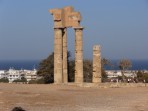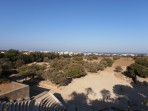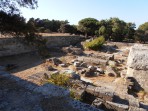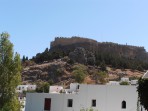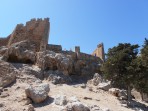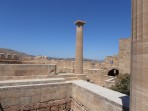Ancient period - Rhodes island
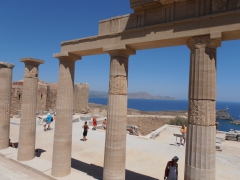
In ancient times, several peoples marked the life on Rhodes, the most important of which were the Phoenicians, the Minoans of Crete, the Achaeans and the Dorians. Around 1200 BC. The Dorians built three strong city states - Kamiros, Lindos and Iálissos. It is said that the cities took their names from the daughters of Helios. The sun god Helios was the protector of the island of Rhodes and several monuments were built in his honour.
The towns of Kamiros, Lindos and Iálissos gradually became famous and powerful centres and together they decided to build a new town, the capital of the island of Rhodes. Thus, in 408 BC, the city of Rhodes was founded according to the project of Hippodamus of Miletus, which is the capital of the island to this day. The ancient period is referred to as the "Golden Age of Rhodes", the island flourished commercially and culturally, and a school of oratory was founded. Throughout the period of Greek antiquity, Rhodes maintained a very strong position. It has always been part of great political-military coalitions and strong alliances, and has occupied an important position in them.
However, Rhodes has not escaped the attempts of other nations to take control of its territory and strategic position. As Alexander's empire was crumbling, the Greek island established close ties with the Ptolemaic dynasty in Egypt. This did not please the ruler of Asia Minor and Syria, Antigonus, who sent his son Demetrius Poliorcetes to conquer Rhodes in the summer of 305 BC. The siege lasted for a year, until Demetrios finally went down defeated, against most people's expectations. The inhabitants of Rhodes believed that Helios, the patron saint of the island, had helped them in the battle and decided to pay homage to him by erecting a statue known as the Colossus of Rhodes. After the victory over the Syrian ruler, Rhodes experienced further prosperity. During this time, the most famous artists, writers and philosophers lived here. The sovereignty and independence of the island ended after the Roman invasion in 164 BC and Rhodes became one of the provinces of the Roman Empire.
Monuments:
Even from these earliest times, several important monuments have survived, some of which have only been uncovered and opened to the public, some have even been partially reconstructed. The Acropolis of Rhodes and the Acropolis of Lindos are beautiful, and the archaeological site of Kamiros is also an interesting excursion. The story of the mythical Colossus of Rhodes is also linked to the ancient period.
Did you visit this place and do you have some additional informations, interessting observation or photos?

